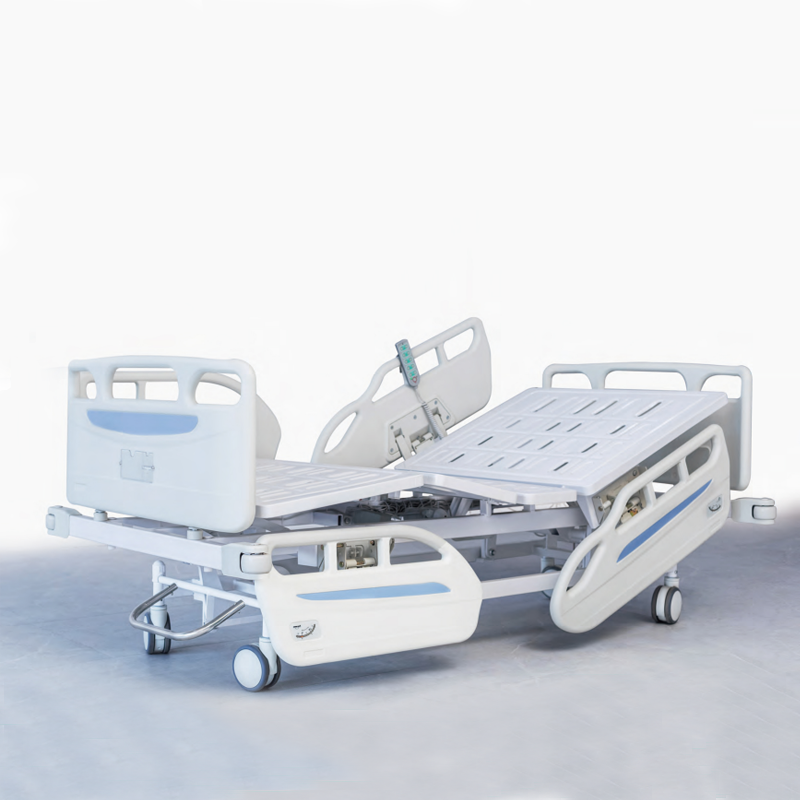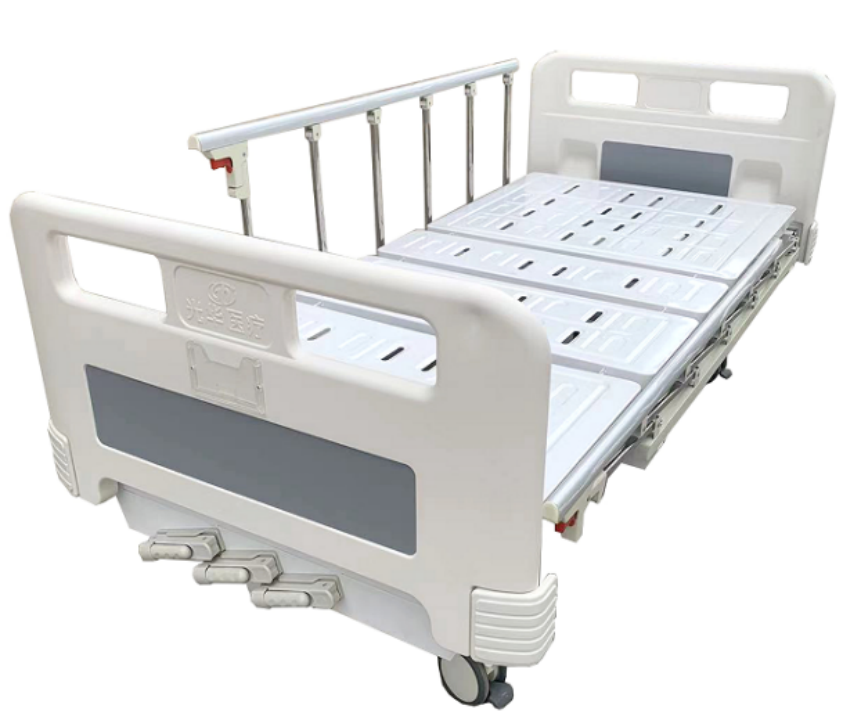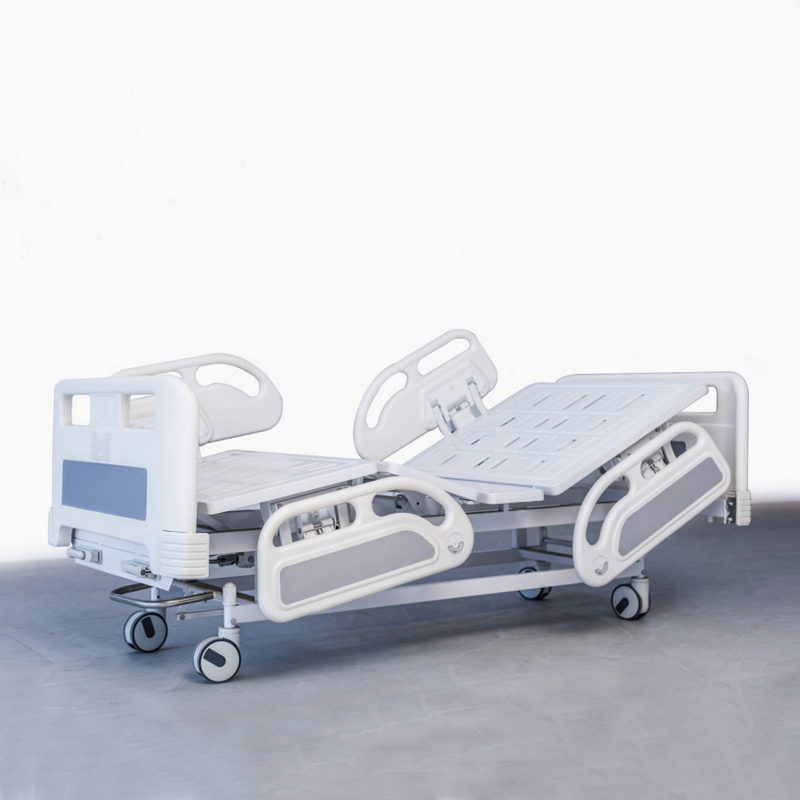The ICU (Intensive Care Unit) hospital bed is a highly specialized piece of medical equipment, tailored to meet the unique and critical needs of patients in intensive care. In an ICU, patients often require constant monitoring and precise positioning due to their severe medical conditions. ICU hospital beds are equipped with advanced features to support these requirements. They typically have a robust and stable frame that can withstand the weight of multiple medical devices, such as ventilators, infusion pumps, and patient monitors, which are commonly connected to patients in the ICU. The beds are designed with a high degree of adjustability. For example, the ability to adjust the backrest, leg rest, and overall height allows healthcare providers to position patients in the most optimal way for their specific conditions. This might include elevating the head to improve breathing for patients with respiratory problems or adjusting the bed to a Trendelenburg position in case of certain cardiovascular emergencies. Moreover, ICU beds are constructed with materials that can be easily and thoroughly cleaned and disinfected, as maintaining a sterile environment is crucial to prevent infections in immunocompromised ICU patients. Some ICU hospital beds also feature integrated electronic systems that can communicate with other medical devices, enabling seamless data transfer and monitoring of the patient's vital signs. These beds are not only a place for patients to rest but also a platform that integrates with the comprehensive care provided in the intensive care unit, ensuring the best possible outcomes for critically ill patients.


